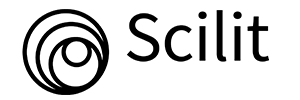
Journal Basic Info
**Impact Factor calculated based on Google Scholar Citations. Please contact us for any more details.Major Scope
- Colorectal Cancer
- Endometrial Cancer
- Immunology
- Bladder Cancer
- Targeted Therapy
- Stomach Cancer
- Lymphoma
- Paediatric Cancers
Abstract
Citation: Clin Oncol. 2017;2(1):1290.DOI: 10.25107/2474-1663.1290
Radiologic-Pathologic Correlation in Lung Cancer Presenting as a Subsolid Nodule: Room for Improvement?
Annemie Snoeckx, Pieter Reyntiens, Patrick Pauwels, Paul E. Van Schil, Maarten J. Spinhoven, Paul M. Parizel and Jan P. van Meerbeeck
Department of Radiology, Antwerp University Hospital and University of Antwerp, Wilrijkstraat, Belgium
Department of Pathology, Antwerp University Hospital and University of Antwerp, Wilrijkstraat, Belgium
Department of Thoracic and Vascular Surgery, Antwerp University Hospital and University of Antwerp, Wilrijkstraat, Belgium
Department of Thoracic Oncology, Antwerp University Hospital and University of Antwerp, Wilrijkstraat, Belgium
*Correspondance to: Annemie Snoeckx
PDF Full Text Review Article | Open Access
Abstract:
Pulmonary nodules are a common finding on Computed Tomography (CT) imaging studies. Nodules are becoming more frequently encountered in daily practice due to widespread use of CT and increasing interest in lung cancer screening by low dose CT. In 2011, the term bronchioloalveolar carcinoma was abandoned and the new IASLC/ATS/ERS classification system of lung adenocarcinoma and its precursors was introduced. In 2015, this new classification system was adopted by the World Health Organization (WHO). In this new classification findings on histopathology are correlated with imaging studies. This correlation holds imperfections, leaving room for improvement. A correct classification of pulmonary nodules into solid or subsolid is key to precise nodule management. Furthermore, morphological assessment of subsolid nodules is mandatory and essential for follow-up and assessing likelihood of invasiveness. A significant group of lesions that are pure ground glass without a solid component and hence suspicious for Atypical Adenomatous Hyperplasia (AAH) or Adenocarcinoma In Situ (AIS) on imaging grounds, turn out to be invasive adenocarcinoma. Other lesions that are part-solid on CT and suspicious for invasive adenocarcinoma turn out to be only AIS at resection. Moreover, nodule classification and morphological assessment are prone to variability among radiologists. Computer aided techniques and quantitative CT-analysis are on the rise. These techniques will create room for standardization and will make prospective studies regarding radiologic-pathologic correlation in subsolid nodules more precise and reliable. More accurate radiologic-pathologic correlation will lower the risk of over-/underdiagnosis and will aid in optimal patient selection for surgical treatment.
Keywords:
Cite the Article:
Snoeckx A, Reyntiens P, Pauwels P, Van Schil PE, Spinhoven MJ, Parizel PM, et al. Radiologic-Pathologic Correlation in Lung Cancer Presenting as a Subsolid Nodule: Room for Improvement? Clin Oncol. 2017; 2: 1290.













